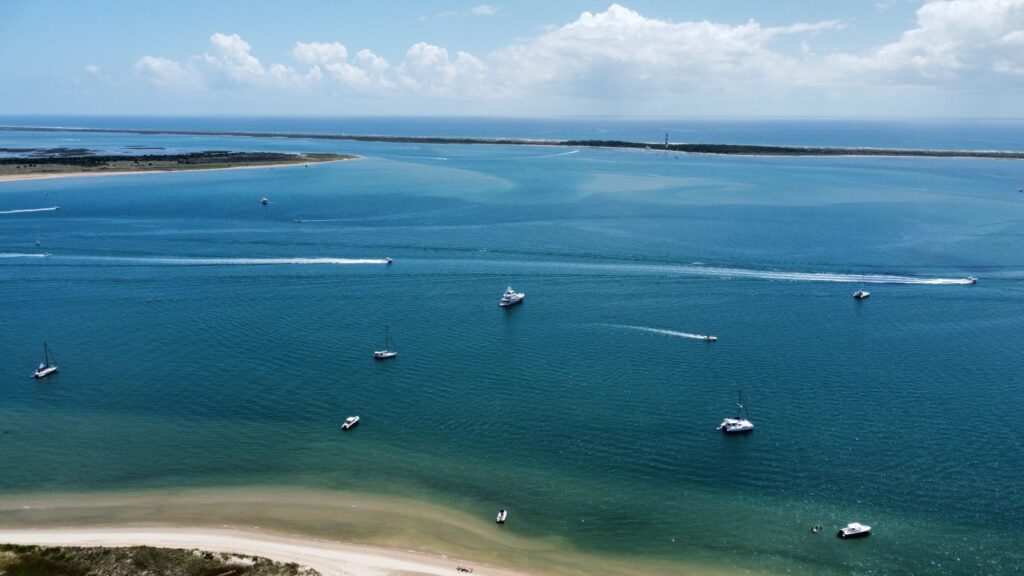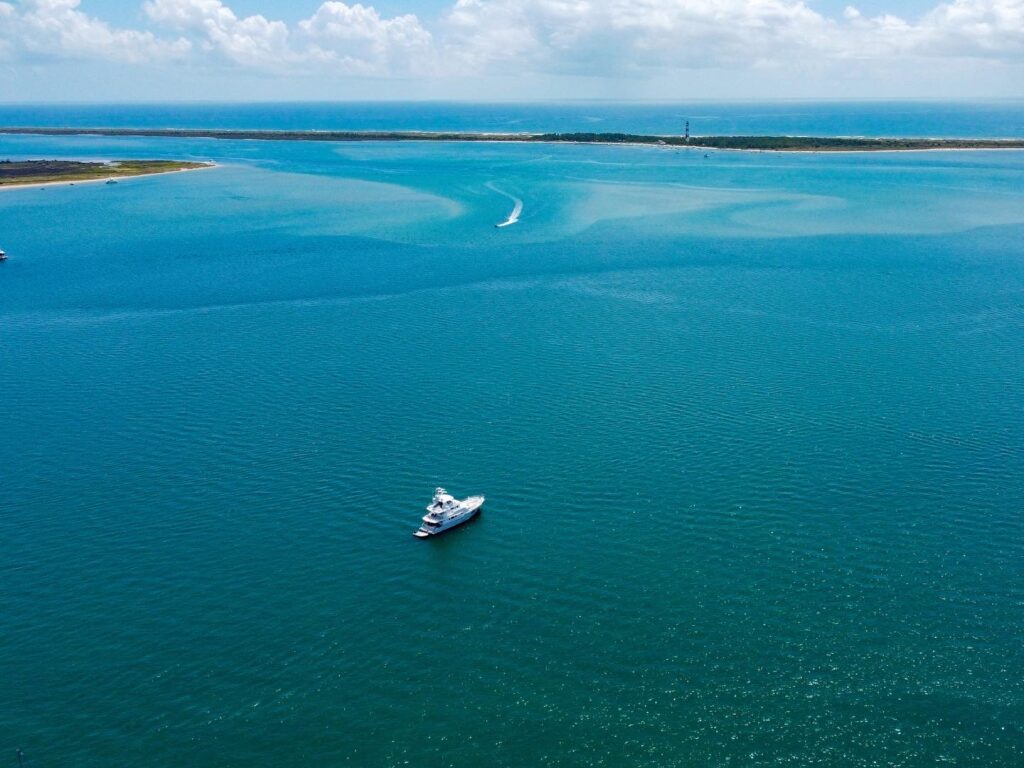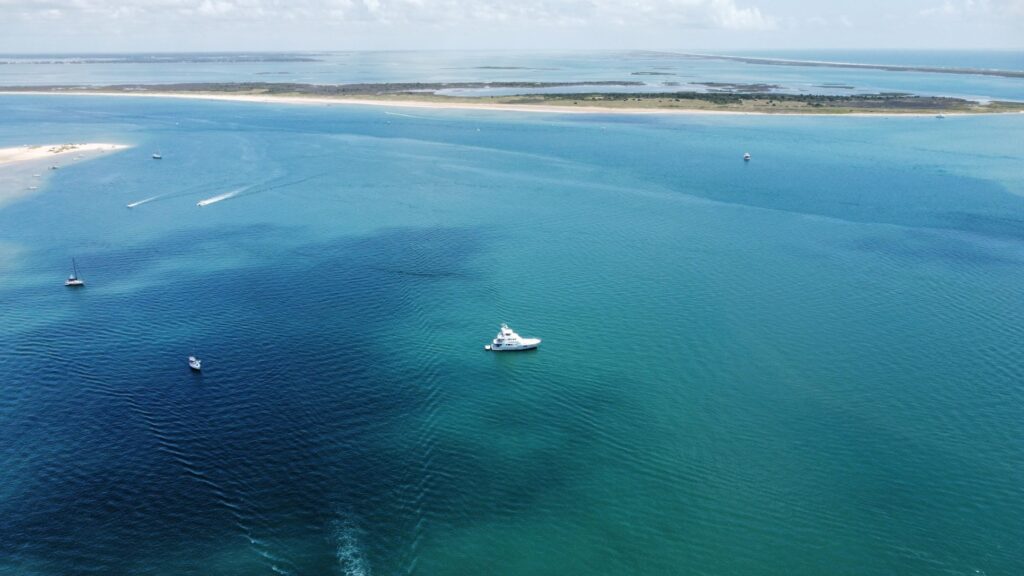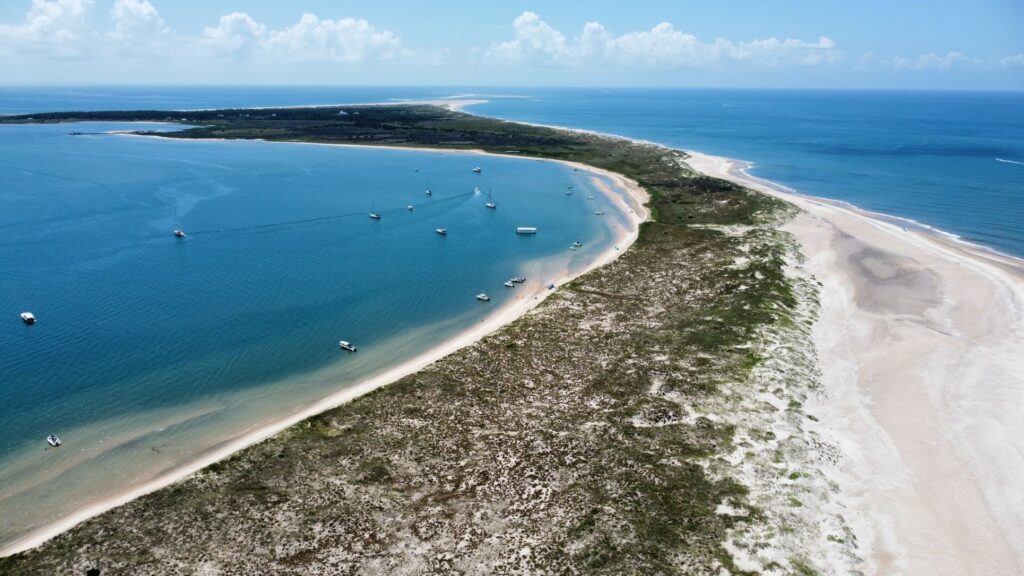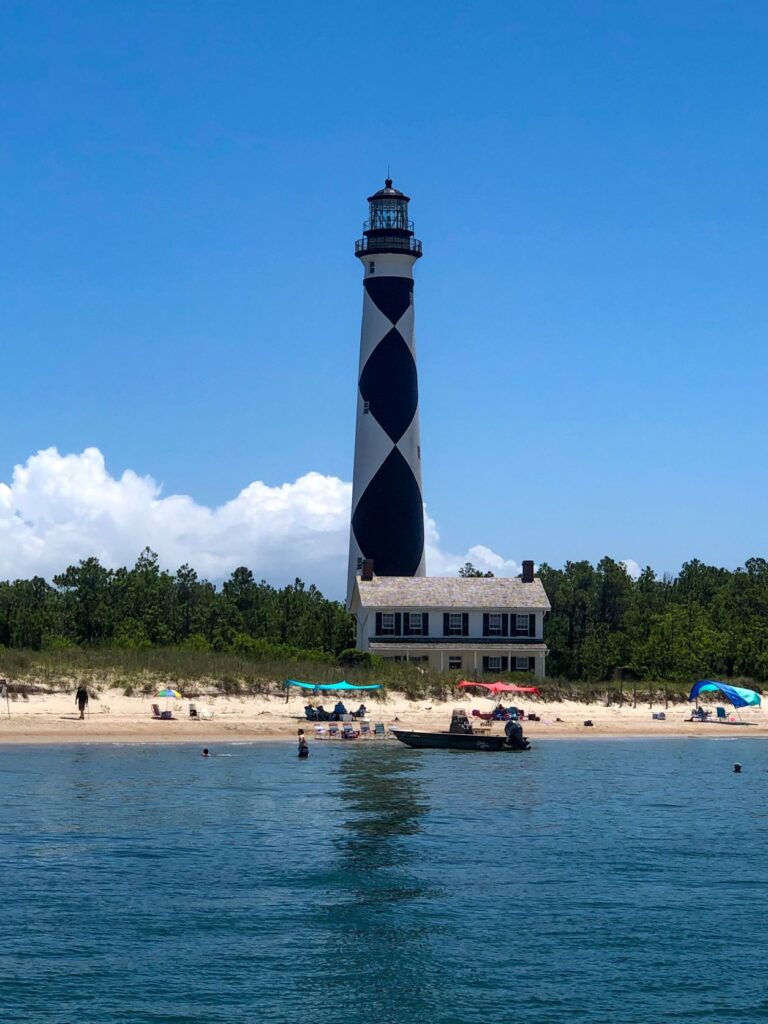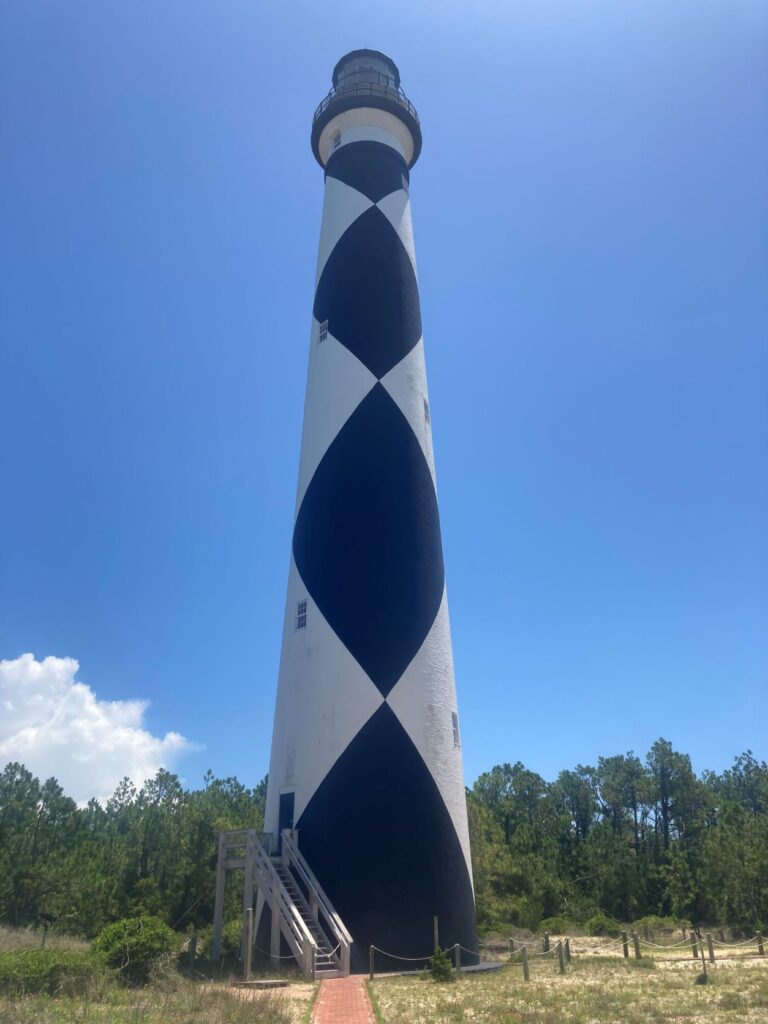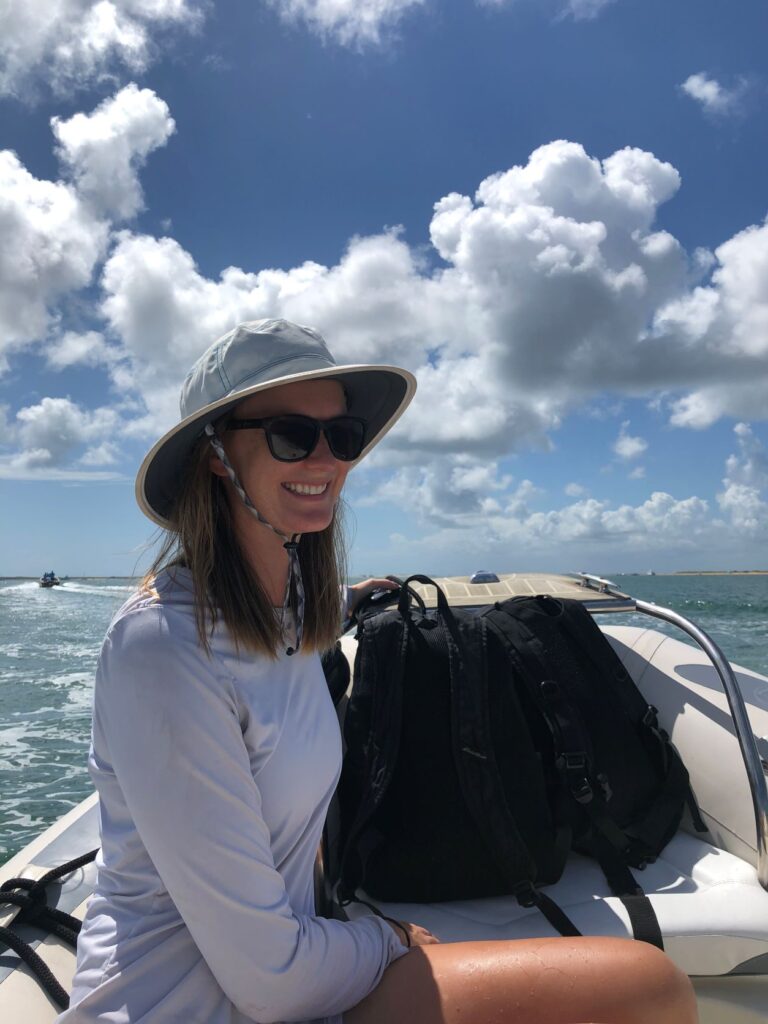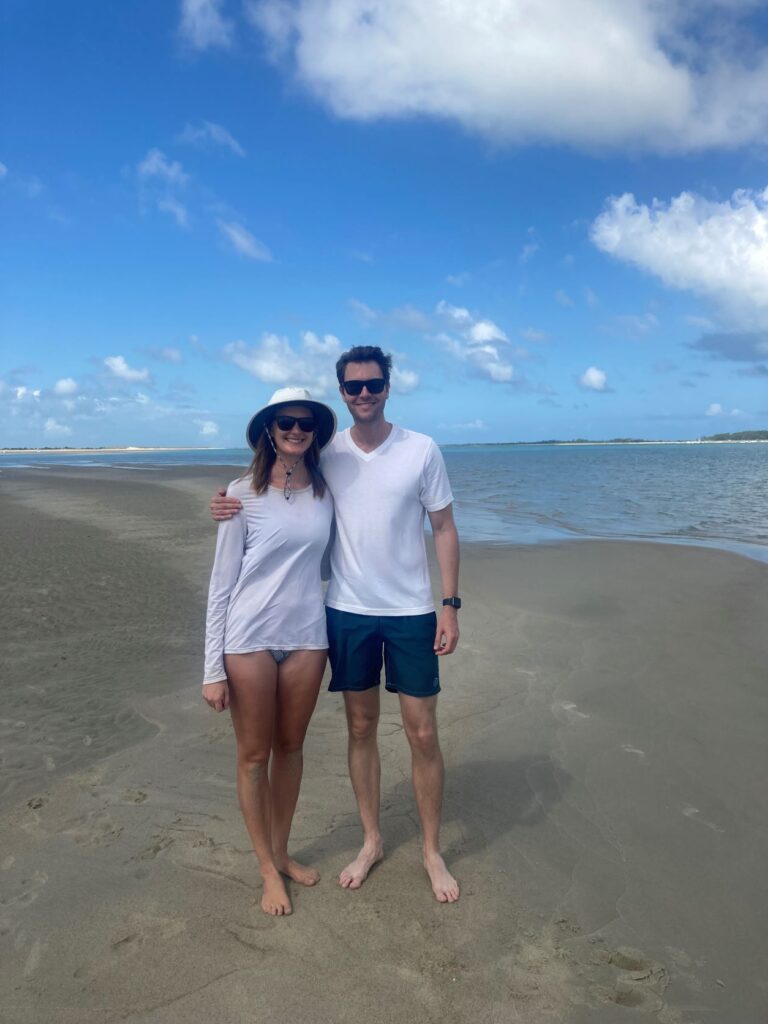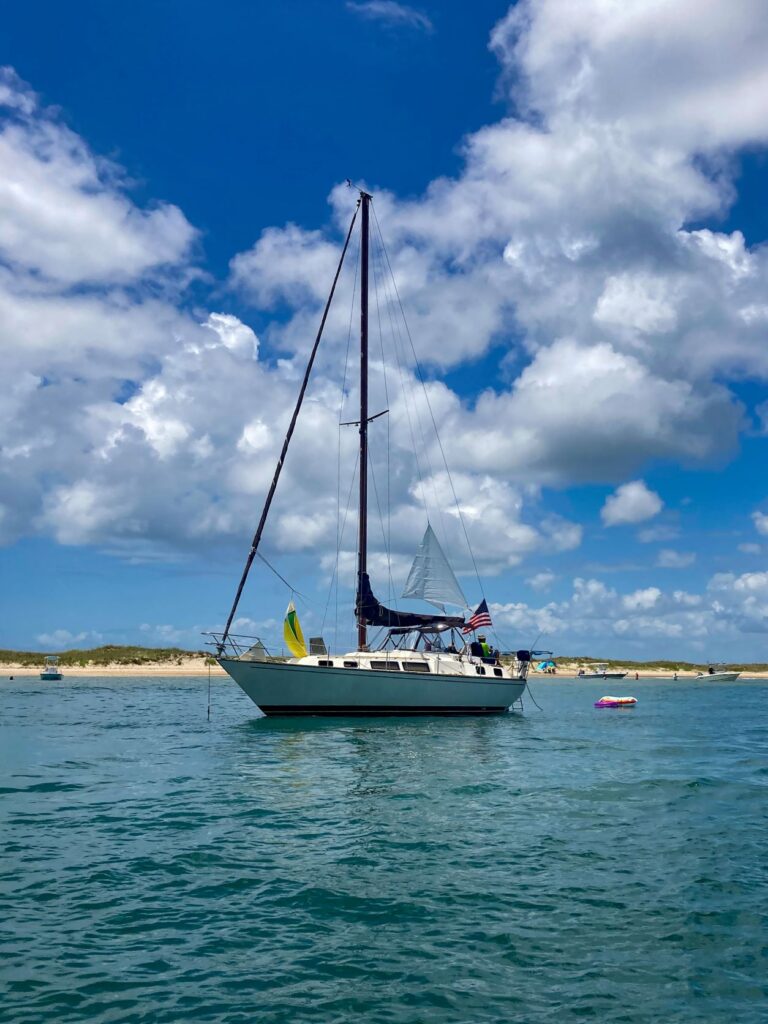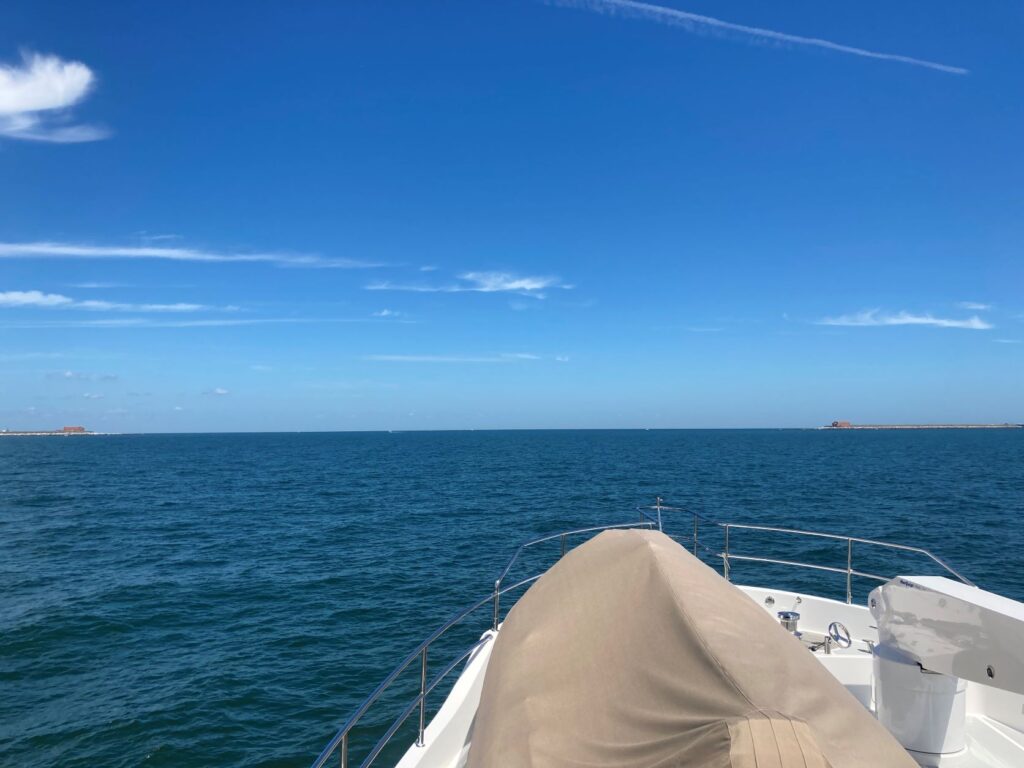Cape Lookout is a hook-shaped bay bordered by an endless stretch of beach whose skyline is only interrupted by a black and white painted lighthouse. Upon anchoring, we were greeted by water clear enough to jump in, which was a huge relief given the heat and humidity of the afternoon. Eitan and I launched the tender to see the owners off to shore, then rushed to change into our bathing suits to take a dive off the swim platform. This was the first time we had been able to swim off the boat since Mexico and it felt incredible. Since we were still waiting on a part to install the permeant swim ladder, we had to use the emergency rope ladder to climb back on board, which was about as difficult to climb up as having nothing at all. Unfortunately, we could only cool off for a short while before continuing on with our boat duties.
The following day we celebrated the arrival by sleeping in and having a pancake breakfast. Having spent the previous afternoon ashore, the owner gave us use of the tender and Eitan and I headed to shore to meet my friend Jon-Erik (JE). I met JE in Thailand on a sailing trip several years ago and he is now living in Wilmington, North Carolina, which was a potential stop on our way north. Eitan thought it best to keep moving farther up the coast while we still had decent weather, so we skipped the stop. Still wanting to meet up, JE drove out to see us instead. We spent the afternoon enjoying the beach by the lighthouse, then spending some time on a sandbar that was newly exposed by the lowering tide. We even saw an S2 sailboat, the same make and model as S/V Sierra Wind! Only 52 of these sailboats were made and what were the chances we would see one here?!
After JE headed home, we called it an early night, preparing for our next overnight passage around the notorious Cape Hatteras, nicknamed “Graveyard of the Atlantic”. Due to the navigational challenges and unpredictable currents, more than 5,000 shipwrecks have been recorded there since the 1500s. For these reasons, Eitan was paying extra special attention to the weather forecast models and eyeing a large high-pressure system over most of the Atlantic and a new low preassure system forming to the south of us. I’m no meteorologist but I know that high pressure systems bring light winds and dry weather, while low pressure systems bring wind, waves, and rain.
The following morning, we departed Cape Lookout and watched as the sea state progressed from swells of 2 to 4 feet, to 4 to 6 feet, and then over 10 feet. It appeared the new low-pressure system was arriving earlier and much stronger than modeled, stirring up the ocean and causing an incredibly uncomfortable ride. Although the stabilizers work fantastic most of the time, swells over 6 feet still caused water bottles to topple over and provoke the dreaded sound of things crashing elsewhere onboard. Eitan received a notice on his phone that the low-pressure system had been upgraded to Tropical Storm Danny, our second named storm in only one week!
After 4 hours of holding onto the handrails (and trying to hold down our breakfasts), Eitan made the call to turn around and wait for the system to pass. Weather around Cape Hatteras can be quite unpredictable and he didn’t want to take any changes with an upgraded tropical storm headed our way. While beating into the swell left much to be desired, following seas weren’t much more comfortable. Traveling with the waves and current can be hard on the autopilot because the speed of the water relative to the boat is reduced, thereby reducing the rudder’s efficiency. An hour into our return trip, we started to get overheating warnings on the autopilot display and Eitan had to alternate between the primary and backup systems.
We arrived back in Cape Lookout, hungry and tired, and awaited new weather forecasts for an indication of when we could leave. Eitan estimated the next day would likely have much better conditions and we would plan to depart in the morning. Despite completing only one of four planned overnight trips to get us to New York, the owner decided he would rather travel at a slower pace to minimize the longer passages. Eitan went back to the map and created a new schedule and route that would take us up the Chesapeake Bay, through the Chesapeake and Delaware Canal, then down through Delaware Bay. Unfortunately, we would still need to do an overnight passage to round Cape Hatteras, but after that it would only be shorter day trips. Instead of picking the wife up in New York, we would pick her up in Washington DC, where there were direct flights from the West Coast. Although going up the Chesapeake, crossing over, and then back down the Potomac was essentially adding a week of transit, we would at least be spending the 4th of July in the Nation’s Capital!
With the new route and schedule, we departed Cape Lookout the next morning, nervously anticipating 30 hours of the same sea state as the day before. Everyone (except Eitan, because he was planning it) was pleasantly surprised by the absolutely flat ocean conditions as we motored offshore, feeling like we were still at anchor because it was so calm. It seems the low pressure system had passed and we had 2-3 knots of wind, calm seas, and sunny skies for the rest of the day and into the night. It was so comfortable that we decided to pass our original destination in Virginia Beach and continue into the mouth of the Chesapeake to a small anchorage off one of the tributaries.
